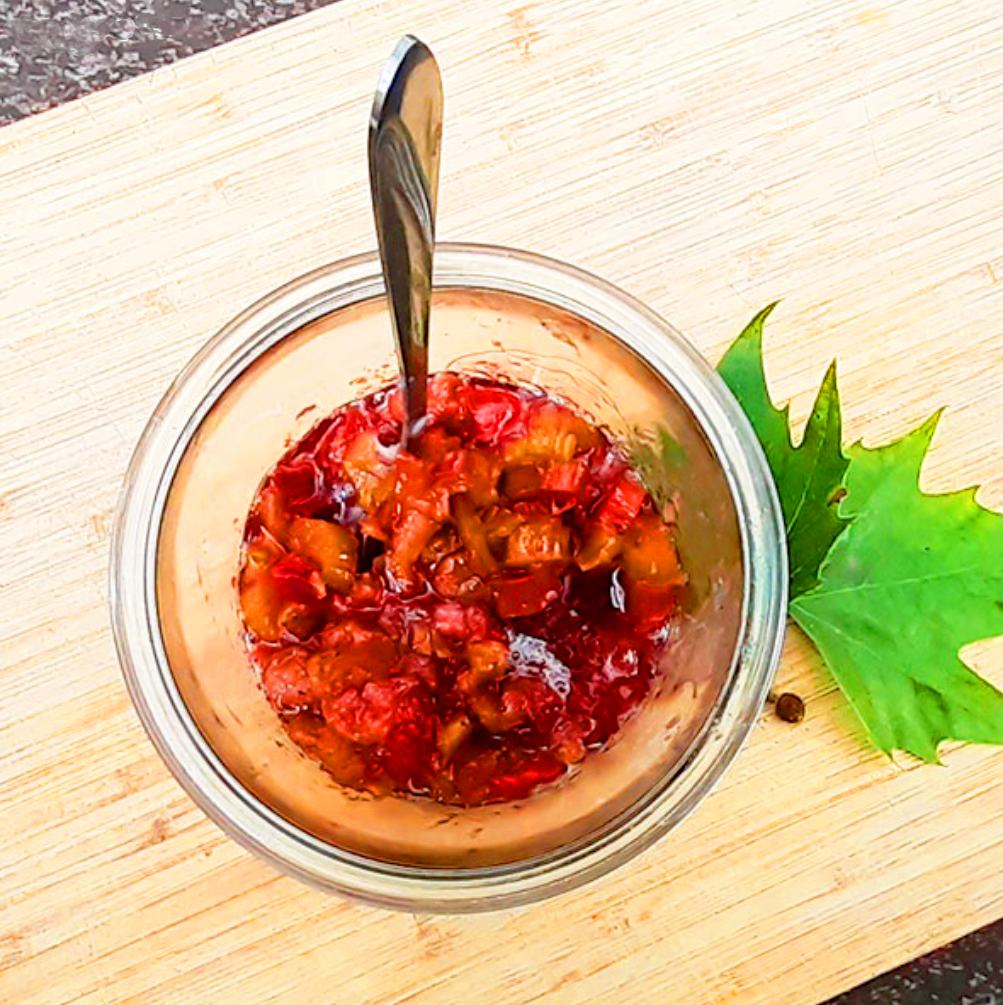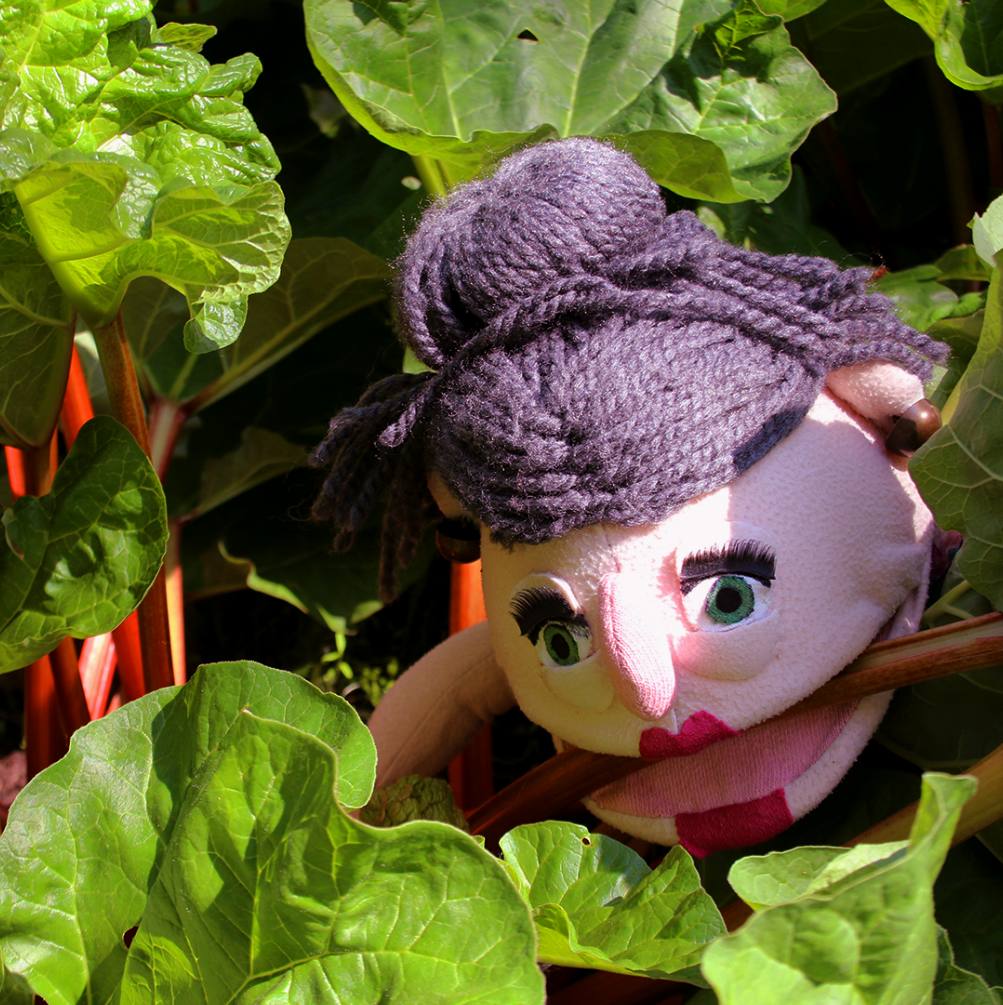Rhubarb compote

🍵🤔 Did you know that rhubarb stalks can also be dehydrated and infused with fruit juice? Although rhubarb is a vegetable and a member of the buckwheat family, it is often used for the same culinary purposes as fruits.
![]() Rhubarb is a rich source of nutrients providing 45% of the daily value for Vitamin K in a serving size of 1 cup. It is also high in fiber providing similar amounts as oranges, apples, or celery.
Rhubarb is a rich source of nutrients providing 45% of the daily value for Vitamin K in a serving size of 1 cup. It is also high in fiber providing similar amounts as oranges, apples, or celery.
🌱😋 The rhubarb leaf stalks have a crisp texture similar to celery and can be eaten raw, added to savory dishes, or pickled. Although most commonly stewed, poached, or roasted to make delicious desserts like crumbles, pies, jam, or Grandma Sita’s rhubarb compote (plant-based recipe below).
- INGREDIENTS
4 cups rhubarb stalks, roughly chopped
¾ cup unrefined cane sugar
½ teaspoon vanilla extract
½ cup water
Half a lemon or orange peel
2 apples or 2 cups strawberries, roughly chopped (optional)
- METHOD
1. Wash and chop rhubarb stalks. The skin of rhubarb stalks is edible and it softens during cooking.
2. Combine all ingredients in a large sauce pot.
3. Heat to medium-high and stir occasionally until rhubarb begins to break down.
4. Remove from heat, and allow to cool to room temperature.
5. Serve with plant-based yogurt, custard, or ice cream for a great seasonal treat!

🧓🏻❤️ Grandma Sita’s tips:
*Refrigerate the compote in a glass jar and use it as desired.
*To store in the fridge keep the leaves on until you are ready to use as this helps to keep the rhubarb fresh. You can freeze rhubarb raw, blanched, or fully cooked.
🚫 Keep in mind that rhubarb leaves are highly toxic and are not safe to eat for both humans and animals. Although you can compost them, no problem!
📗 Compote is a dessert made of whole or pieces of fruit cooked in water with sugar and spices. It wasn’t until the 18th century when sugar became cheap and readily available, that rhubarb became a popular food. Before that, it was mainly used medicinally.
♻️ Nearly half of all fruits and veggies produced globally are wasted yearly. So what if you could do one thing to reduce food waste in your kitchen? Eating local and seasonal fruits and vegetables helps to reduce food waste, saves resources, improves food quality and healthy habits, and boosts the local economy. All of us can act at home to reduce our waste and every single one counts. Make fruit compote, not waste!
